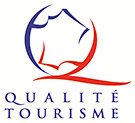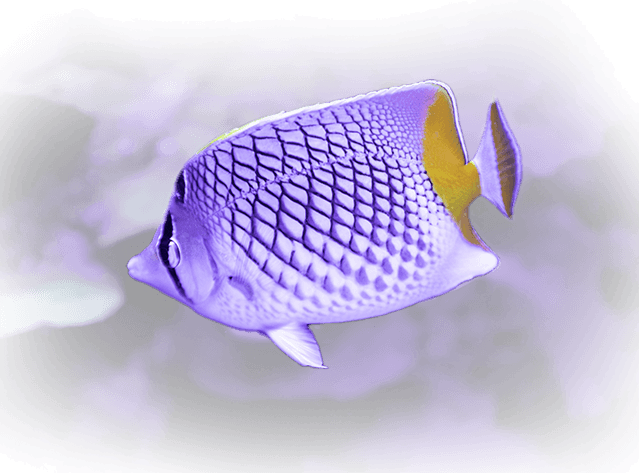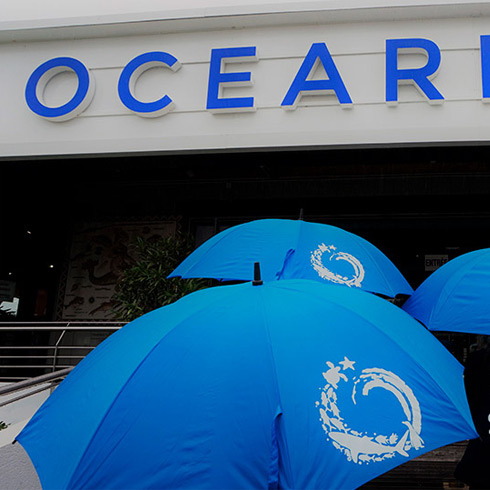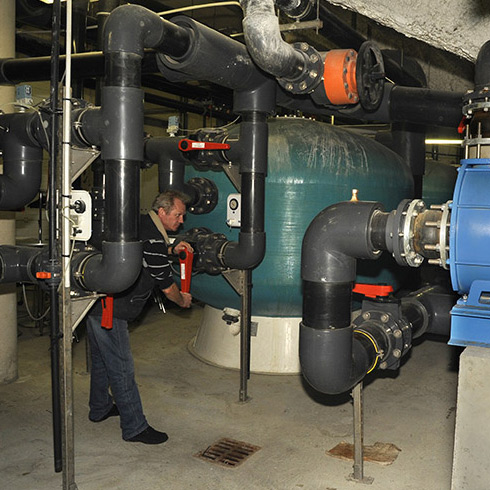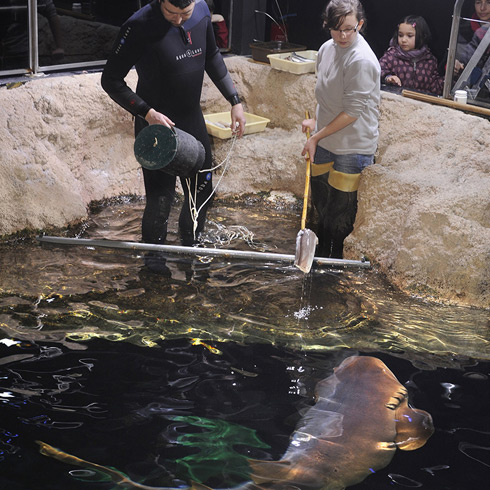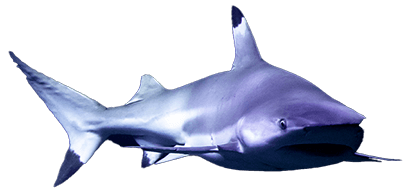2,500 cubic metres of natural seawater: this is the total volume held by the aquarium’s installations.
This vital element for any aquatic organism is pumped up 400 metres from where the Océarium stands.
First the water is stored, then decanted into two tanks measuring 200 cubic metres. It is then filtered, using two techniques:
- mechanical filtration
- sand filtration of the type used by swimming pools.
- The seawater is regularly monitored. The main parameters for measuring the ‘quality’ of the seawater are its salinity, pH, and levels of dissolved nitrates and oxygen. Thanks to its special geographical position, Le Croisic peninsula, which penetrates 5 km into the sea, has very good quality water.
The 55 saltwater aquariums on display to the public are simply the visible part of a complex mechanism. The filtration room, the lifeline of the aquariums, is in the basement. It is here that the seawater is oxygenated and cleaned, and where its temperature is regulated.
The water in the aquariums is partially renewed, at around 5% a day. All the ‘Atlantic’ area aquariums are connected to a heat exchanger and a cooling unit so their temperature can be maintained at 16 degrees Celsius. For the tropical area tanks, a gas boiler and a heat pump maintain the water at 25 degrees Celsius. Ultraviolet light is used to sterilise the tanks.
